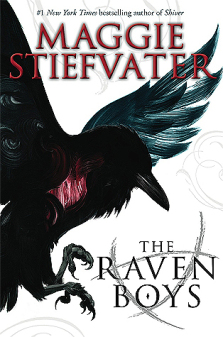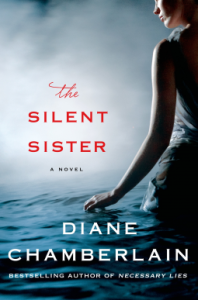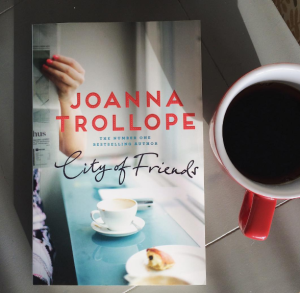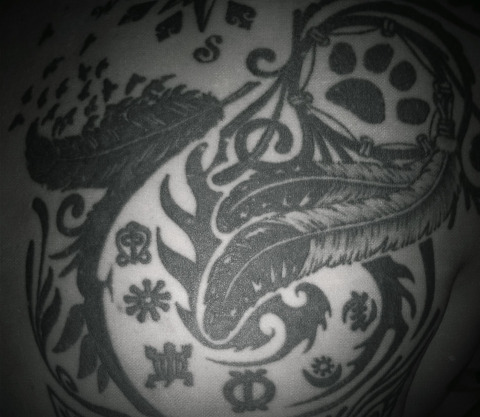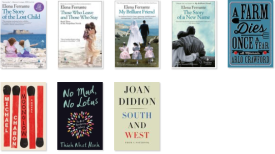 In a year marked by tragedy—both personal and political—I turned to books, as usual, for solace, answers, escape, and laughter. I had set out to read 20 books in 2017 (I’d forgotten about this goal until I recently logged into my Goodreads account) and ended up reading only eight books. Better luck next year! Despite the many challenges of 2017, I found lots of pleasure in the books I read this year, and so I present to you (in hopes that you might enjoy a few, too) my year in books, in chronological order:
In a year marked by tragedy—both personal and political—I turned to books, as usual, for solace, answers, escape, and laughter. I had set out to read 20 books in 2017 (I’d forgotten about this goal until I recently logged into my Goodreads account) and ended up reading only eight books. Better luck next year! Despite the many challenges of 2017, I found lots of pleasure in the books I read this year, and so I present to you (in hopes that you might enjoy a few, too) my year in books, in chronological order:

1. South and West: From A Notebook by Joan Didion
Only Joan Didion can publish excerpts from her notes and captivate an audience. As a fan of Joan Didion, I greatly appreciated this book. Written in 1970 after a month trip to the South without a specific story in mind, Didion’s notes offer a unique outsider’s perspective on life in the South and the reader can see through her observations how the mostly unchanged South has influenced our current political climate.
 2. No Mud, No Lotus: The Art of Transforming Suffering by Thich Naht Hahn
2. No Mud, No Lotus: The Art of Transforming Suffering by Thich Naht Hahn
I purchased this book shortly after my mom’s passing in order to start to grapple with grief (which as many of you know is a lifelong journey). Many of the ideas in this book resonated with me–particularly the idea that one shouldn’t try to push away suffering in order to find happiness; both have to peacefully coexist. Hahn also talked about the idea that we often let “les petites miseres” of life cause us more suffering than its worth. I’m pretty new to meditating (as in, I’ve done it a handful of times), but the mantras at the end of the book providing helpful centering exercises.
3. A Farm Dies Once A Year: A Memoir by Arlo Crawford
I’d come across this title on a list of promising nonfiction to read in 2014. I’d picked up the book in 2014 at a time when I relate to the narrator-a young 30-something who was questioning his purpose in life and searching for meaning. Also like the narrator, I fantasized about simplifying my life and moving to a farm to live and work of the land (instead I opted to return to the field of teaching). I finally read this book it in its entirety this year when I decided I was going to rotate fiction and nonfiction. I found that by now, I no longer could relate to the narrator and the story felt a little trite, the narrator a little whiny, and the idea of showing up to one’s parents’ farm to live and work for a year and then move a little too classic millennial for my tastes.
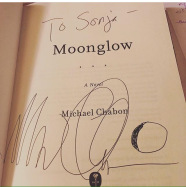
4. Moonglow by Michael Chabon
This book was given to me last Christmas by my mom and it turned out to be the last book she would ever give me, so this book has a lot of sentimental value to me in addition to it being a beautifully-written and intriguing story. We’d first heard of the book a couple summers ago while watching a segment on PBS Newshour where Michael Chabon spoke about his process for writing Moonglow, which is billed as a “faux-memoir novel,” and we were intrigued. The story takes place in 1989 while the narrator’s grandfather is on his deathbed. While on medication, he tells the narrator stories about his life, which is also interspersed with the narrator’s memories of his childhood. The novel plays with the conventions of fiction and memoir and I was pleased to hear Michael Chabon read from Moonglow and talk about his process this past fall at the 92 Street Y. I even waited in line and had the copy of the book my mom had given me autographed.
5-8 The Neapolitan Novels by Elena Ferrante
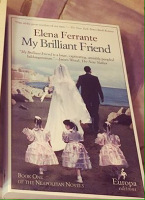 5. My Brilliant Friend
5. My Brilliant Friend
6. The Story of a New Name
7. Those Who Leave, and Those Who Stay
 8. The Story of the Lost Child
8. The Story of the Lost Child
I ended the year by reading the Neapolitan Novels. This was a delightful adventure that I recommend to anyone who loves coming-of-age tales that last over four thick novels. The story chronicles the life of Elena Greco and her lifelong friendship with Lila from elementary school until the present. The first novel is set against the backdrop of 1950s Naples, in a poor neighborhood where few residents go to school beyond elementary school, and the novels that follow trace Elena’s life through the decades amidst varying political changes and struggles of the time and relationships with family, friends, lovers, neighbors. One of the blurbs on the front cover of the first novel summarizes these novels best, “Imagine if Jane Austen got angry and you’ll have some idea of how explosive these works are.”
There is also some mystery surrounding the actual identity of Elena Ferrante, the author’s pen name, which adds an even more exciting buzz to these already intriguing novels.
That’s all for 2017! I’m looking forward to reading more in 2018 (hoping to hit 20) and of course I’m looking for your suggestions! Here’s to another great year in books!
Advertisements Share this: